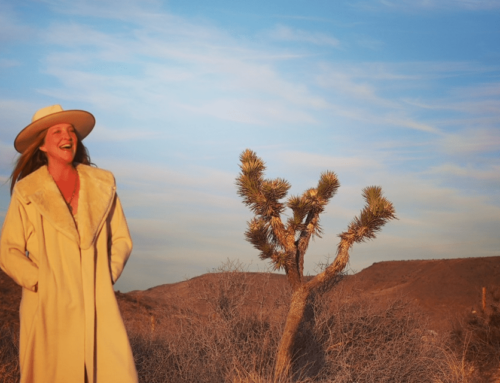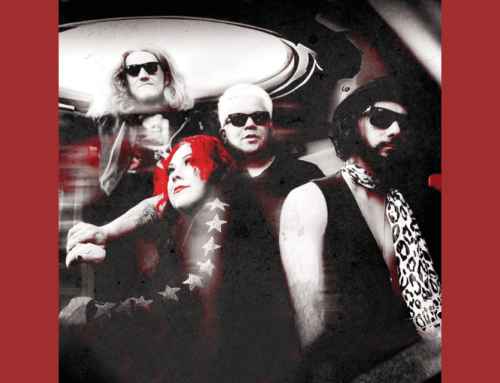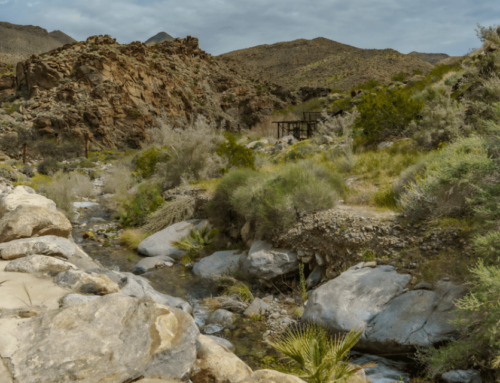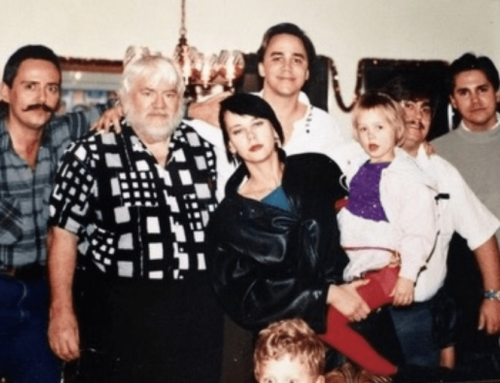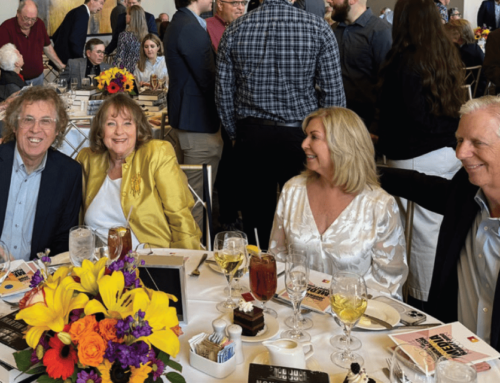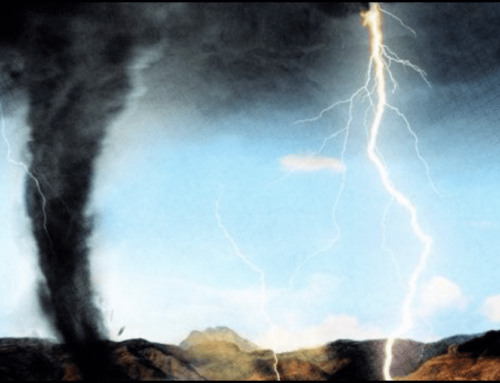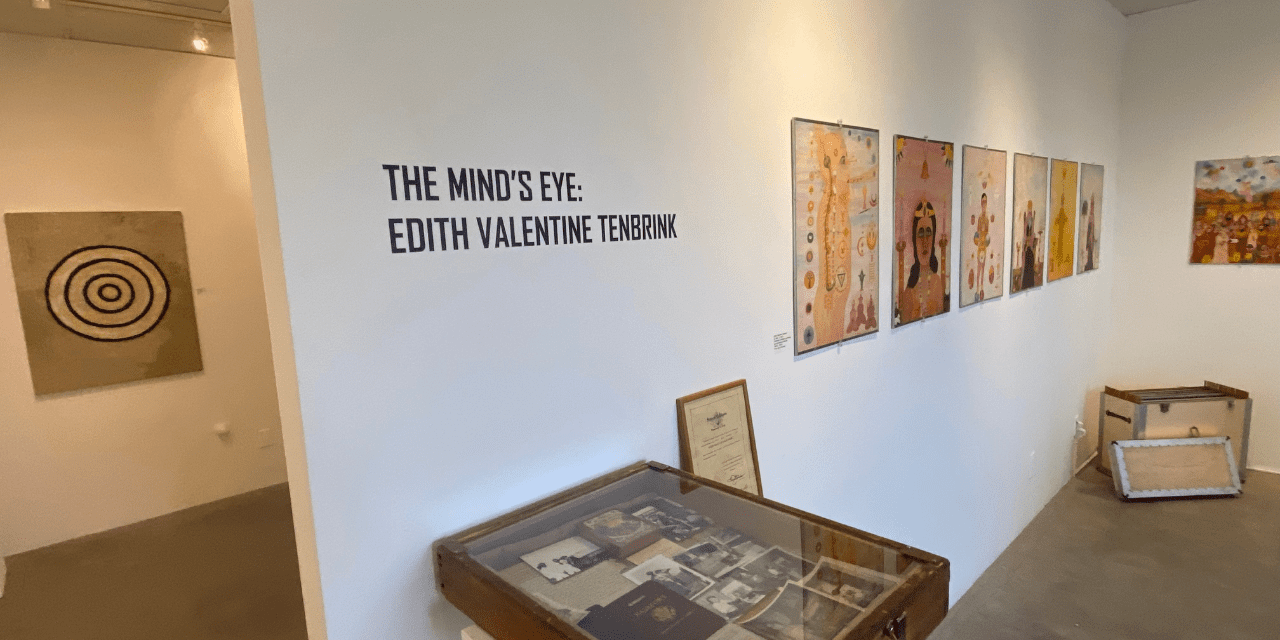
SAVED FROM OBSCURITY: The Visionary Artwork of Edith Valentine Tenbrink
By Katie Nartonis
Early 20th Century California was fertile ground for new metaphysical and religious thought. Untethered from the traditions and conservative culture of the East Coast and Middle States, those folks who settled in Southern California found a freedom of thought here that nurtured both the creation and support of various new esoteric religious forms.
This rich history can be found right here in our own backyard at the Joshua Tree Retreat Center, the home of the Institute of Mentalphysics. Founded by Edwin John Dingle (b.1881), who was known to his religious adherents as “Ding Le Mei.” Dingle was a trailblazing journalist, publisher, writer, and adventurer who walked across China in the 1910s. His approach to spiritual balance was a method of self-realization that teaches that universal life is interconnected. His vision was that spiritual life is embodied in “all substance, energy, and thought.”
Edith Valentine Tenbrink and her husband John were exploring their own visionary religious concepts during the same period as Dingle in Los Angeles, but they were using her unique artwork as visual aids for lectures and in outreach.
Joshua Tree’s own Bobby Furst discovered the Tenbrink collection in the 1990s, when dozens of Tenbrink’s paintings, along with their custom crafted traveling crates and stacks of ephemeral material, were abandoned behind a Venice, California thrift store and found their way to a Hollywood flea Market. Under Bobby’s stewardship, the collection has been shown at the American Visionary Art Museum in Baltimore, Maryland in 2008.
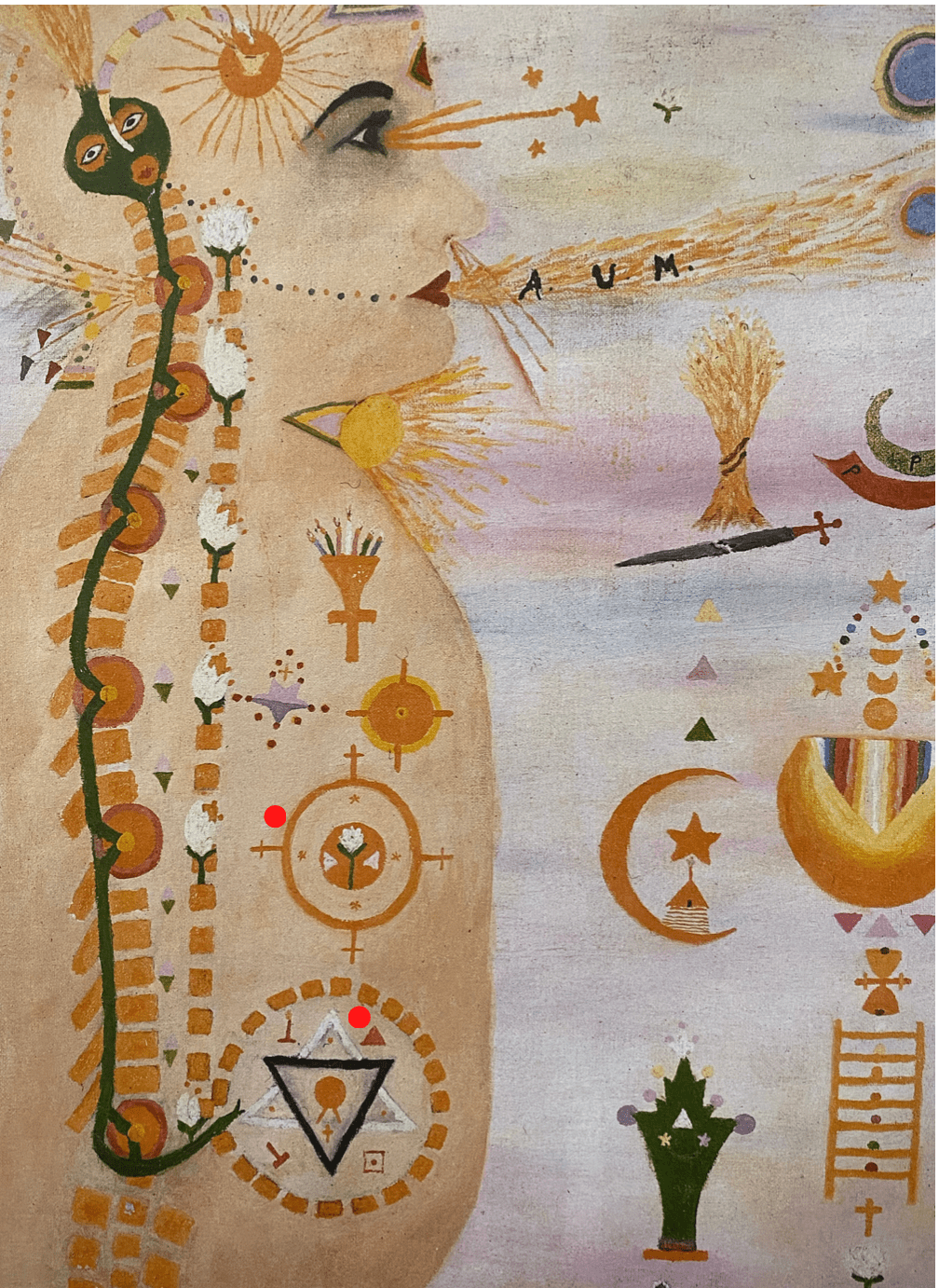
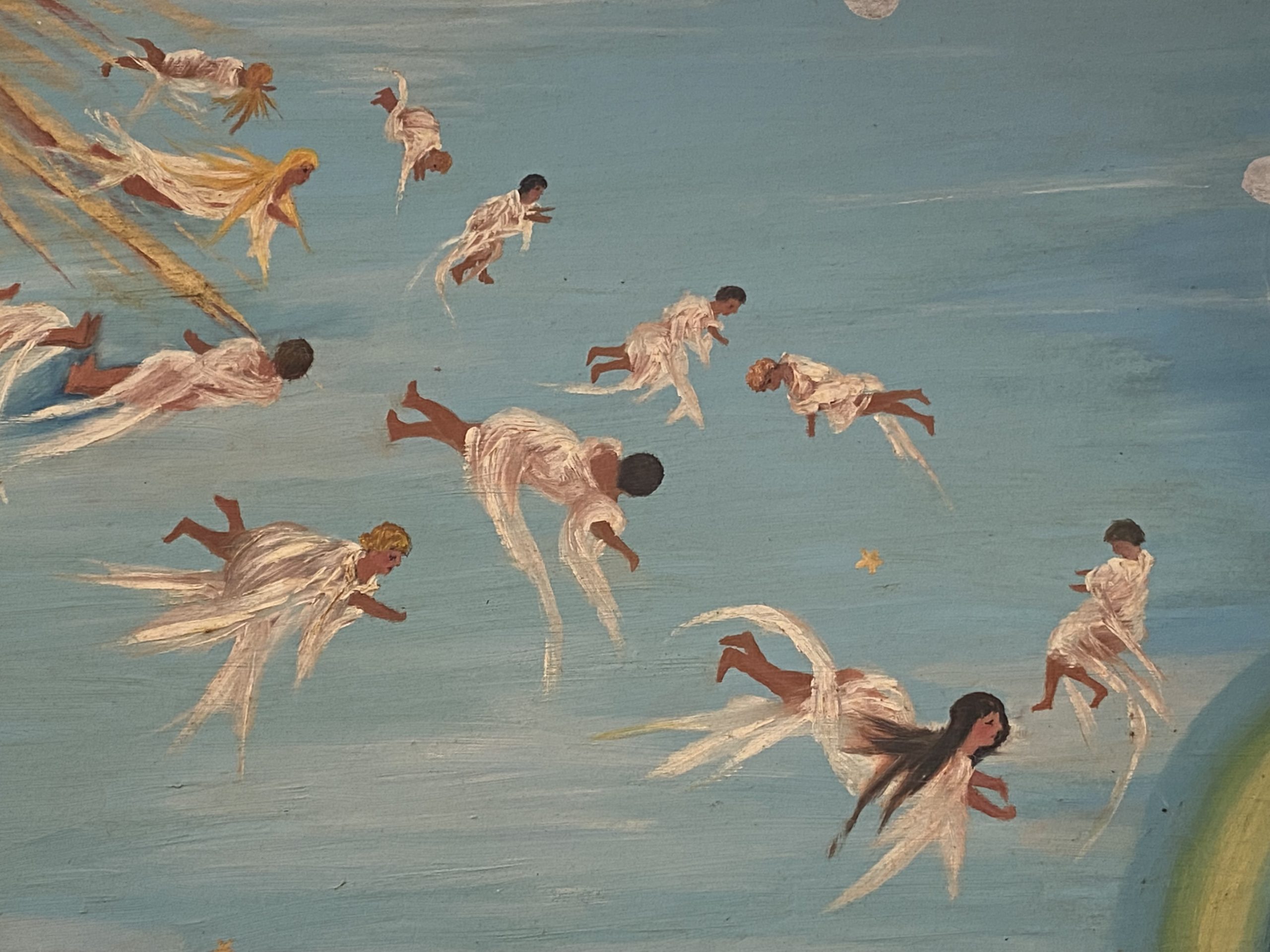
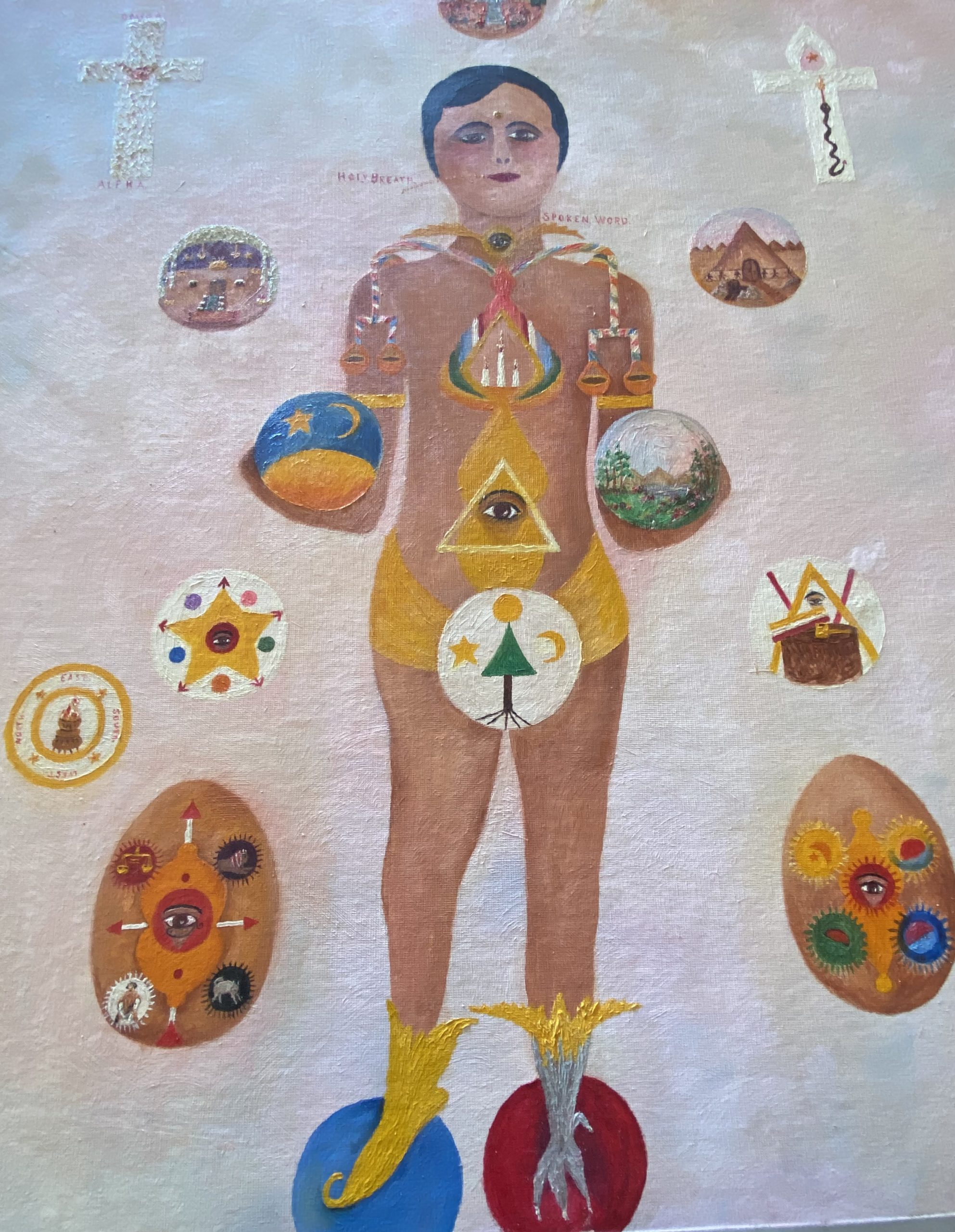
Edith Valentine Smith was born in Iowa on Valentine’s Day in 1883. After an early marriage that ended in divorce, she met and married John Tenbrink. Edith and John moved from Dodge City, Iowa to Los Angeles in 1920 to start a new life. According to the research of Kerry Noonan, Ph.D. and Stephen C. Wehmeyer, Ph.D., once the Tenbrinks were established in L.A., they founded the “Ancient Order of the Golden Precept.” The order was based on ideas they called “The Seven Keyes of the Masters.” The Tenbrinks travels to India and Egypt informed their approach – an intriguing mix of Western and Eastern thought. Edith’s paintings were used to illuminate principles that would bring adherents abundance through “faith, power, wisdom, progress, health, wealth, and happiness.” Tenbrink started painting in the early 1920s and continued well into the 1940s.
The Joshua Tree Art Gallery (JTAG) will show a selection of the visionary paintings of Edith Valentine Tenbrink (1883-1957) in the show, “The Mind’s Eye” from September 3 – 25. Morongo Basin Cultural Arts Council (MBCAC) member artists are contributing their own works that compliment the Tenbrink collection, and explore the metaphysical topic, “The Mind’s Eye.” An informative gallery talk is scheduled at JTAG during ArtWalk on September 10th at 7:00 pm and is open to the public. There are plans for the show to travel to The Joshua Tree Retreat Center for view in October.
Katie Nartonis runs JTAG (Joshua Tree Art Gallery) and is an art and design specialist, writer, curator, and filmmaker who lives in Yucca Valley. Her passion is telling the stories of California artists and is inspired by the many creatives who live here in the high desert communities.
www.thenartonisproject.com



